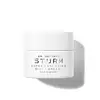What's inside
What's inside
 Key Ingredients
Key Ingredients

 Benefits
Benefits

 Concerns
Concerns

 Ingredients Side-by-side
Ingredients Side-by-side

Water
Skin ConditioningCaprylic/Capric Triglyceride
MaskingDimethicone
EmollientMethylpropanediol
SolventCetearyl Alcohol
EmollientPolymethyl Methacrylate
Glycerin
HumectantC12-16 Alcohols
EmollientCetearyl Isononanoate
EmollientDistarch Phosphate
AbsorbentPPG-12/Smdi Copolymer
EmollientStearic Acid
CleansingTocopheryl Acetate
AntioxidantPropylene Glycol
HumectantSodium Acrylate/Sodium Acryloyldimethyl Taurate Copolymer
Emulsion StabilisingPalmitic Acid
EmollientCetearyl Olivate
Caprylyl Glycol
EmollientTricaprylin
MaskingBehenyl Alcohol
EmollientHydrogenated Lecithin
EmulsifyingSorbitan Olivate
EmulsifyingSqualane
EmollientHydroxyacetophenone
AntioxidantRetinol
Skin ConditioningDisodium EDTA
Arginine
MaskingSodium Hyaluronate
HumectantPhenylpropanol
MaskingCitrus Aurantium Amara Flower Oil
MaskingRosmarinus Officinalis Leaf Oil
MaskingSorbitol
HumectantCitrus Aurantium Dulcis Peel Oil
MaskingHylocereus Undatus Fruit Extract
Skin ConditioningLavandula Angustifolia Herb Oil
PerfumingAnthemis Nobilis Flower Oil
MaskingPogostemon Cablin Leaf Oil
MaskingVetiveria Zizanoides Root Oil
MaskingBHT
AntioxidantAscorbic Acid
AntioxidantLimonene
PerfumingLinalool
PerfumingGeraniol
PerfumingWater, Caprylic/Capric Triglyceride, Dimethicone, Methylpropanediol, Cetearyl Alcohol, Polymethyl Methacrylate, Glycerin, C12-16 Alcohols, Cetearyl Isononanoate, Distarch Phosphate, PPG-12/Smdi Copolymer, Stearic Acid, Tocopheryl Acetate, Propylene Glycol, Sodium Acrylate/Sodium Acryloyldimethyl Taurate Copolymer, Palmitic Acid, Cetearyl Olivate, Caprylyl Glycol, Tricaprylin, Behenyl Alcohol, Hydrogenated Lecithin, Sorbitan Olivate, Squalane, Hydroxyacetophenone, Retinol, Disodium EDTA, Arginine, Sodium Hyaluronate, Phenylpropanol, Citrus Aurantium Amara Flower Oil, Rosmarinus Officinalis Leaf Oil, Sorbitol, Citrus Aurantium Dulcis Peel Oil, Hylocereus Undatus Fruit Extract, Lavandula Angustifolia Herb Oil, Anthemis Nobilis Flower Oil, Pogostemon Cablin Leaf Oil, Vetiveria Zizanoides Root Oil, BHT, Ascorbic Acid, Limonene, Linalool, Geraniol
Water
Skin ConditioningCoco-Caprylate/Caprate
EmollientCetyl Alcohol
EmollientGlycerin
HumectantHelianthus Annuus Seed Oil
EmollientPrunus Amygdalus Dulcis Oil
Skin ConditioningPotassium Cetyl Phosphate
EmulsifyingLactobacillus/Portulaca Oleracea Ferment Extract
AntioxidantHydrogenated Palm Glycerides
EmollientArgania Spinosa Kernel Oil
EmollientPanthenol
Skin ConditioningSodium Polyglutamate
HumectantMaltodextrin
AbsorbentPersea Gratissima Fruit Extract
EmollientSodium Hyaluronate
HumectantLeuconostoc/Radish Root Ferment Filtrate
AntimicrobialNonapeptide-1
Skin ConditioningTocopherol
AntioxidantXanthan Gum
EmulsifyingPantolactone
HumectantCaprylyl Glycol
EmollientEthylhexylglycerin
Skin ConditioningSodium Phosphate
BufferingPhenoxyethanol
PreservativeCitric Acid
BufferingDisodium Phosphate
BufferingWater, Coco-Caprylate/Caprate, Cetyl Alcohol, Glycerin, Helianthus Annuus Seed Oil, Prunus Amygdalus Dulcis Oil, Potassium Cetyl Phosphate, Lactobacillus/Portulaca Oleracea Ferment Extract, Hydrogenated Palm Glycerides, Argania Spinosa Kernel Oil, Panthenol, Sodium Polyglutamate, Maltodextrin, Persea Gratissima Fruit Extract, Sodium Hyaluronate, Leuconostoc/Radish Root Ferment Filtrate, Nonapeptide-1, Tocopherol, Xanthan Gum, Pantolactone, Caprylyl Glycol, Ethylhexylglycerin, Sodium Phosphate, Phenoxyethanol, Citric Acid, Disodium Phosphate
 Reviews
Reviews

Ingredients Explained
These ingredients are found in both products.
Ingredients higher up in an ingredient list are typically present in a larger amount.
Caprylyl Glycol is a humectant and emollient, meaning it attracts and preserves moisture.
It is a common ingredient in many products, especially those designed to hydrate skin. The primary benefits are retaining moisture, skin softening, and promoting a healthy skin barrier.
Though Caprylyl Glycol is an alcohol derived from fatty acids, it is not the kind that can dry out skin.
This ingredient is also used as a preservative to extend the life of products. It has slight antimicrobial properties.
Learn more about Caprylyl GlycolGlycerin is already naturally found in your skin. It helps moisturize and protect your skin.
A study from 2016 found glycerin to be more effective as a humectant than AHAs and hyaluronic acid.
As a humectant, it helps the skin stay hydrated by pulling moisture to your skin. The low molecular weight of glycerin allows it to pull moisture into the deeper layers of your skin.
Hydrated skin improves your skin barrier; Your skin barrier helps protect against irritants and bacteria.
Glycerin has also been found to have antimicrobial and antiviral properties. Due to these properties, glycerin is often used in wound and burn treatments.
In cosmetics, glycerin is usually derived from plants such as soybean or palm. However, it can also be sourced from animals, such as tallow or animal fat.
This ingredient is organic, colorless, odorless, and non-toxic.
Glycerin is the name for this ingredient in American English. British English uses Glycerol/Glycerine.
Learn more about GlycerinSodium Hyaluronate is hyaluronic acid's salt form. It is commonly derived from the sodium salt of hyaluronic acid.
Like hyaluronic acid, it is great at holding water and acts as a humectant. This makes it a great skin hydrating ingredient.
Sodium Hyaluronate is naturally occurring in our bodies and is mostly found in eye fluid and joints.
These are some other common types of Hyaluronic Acid:
Learn more about Sodium HyaluronateWater. It's the most common cosmetic ingredient of all. You'll usually see it at the top of ingredient lists, meaning that it makes up the largest part of the product.
So why is it so popular? Water most often acts as a solvent - this means that it helps dissolve other ingredients into the formulation.
You'll also recognize water as that liquid we all need to stay alive. If you see this, drink a glass of water. Stay hydrated!
Learn more about Water